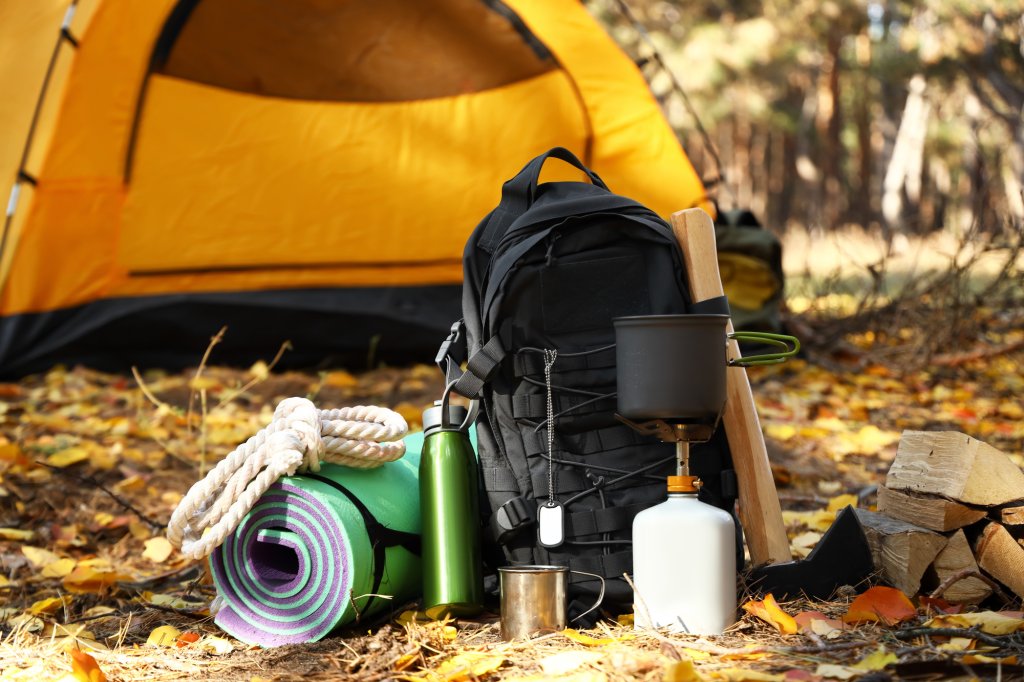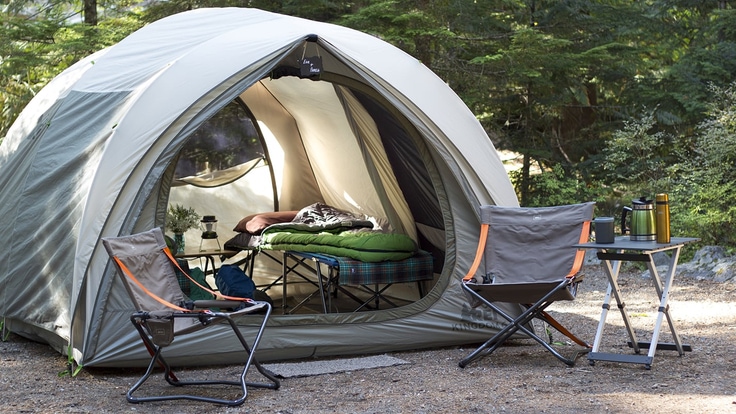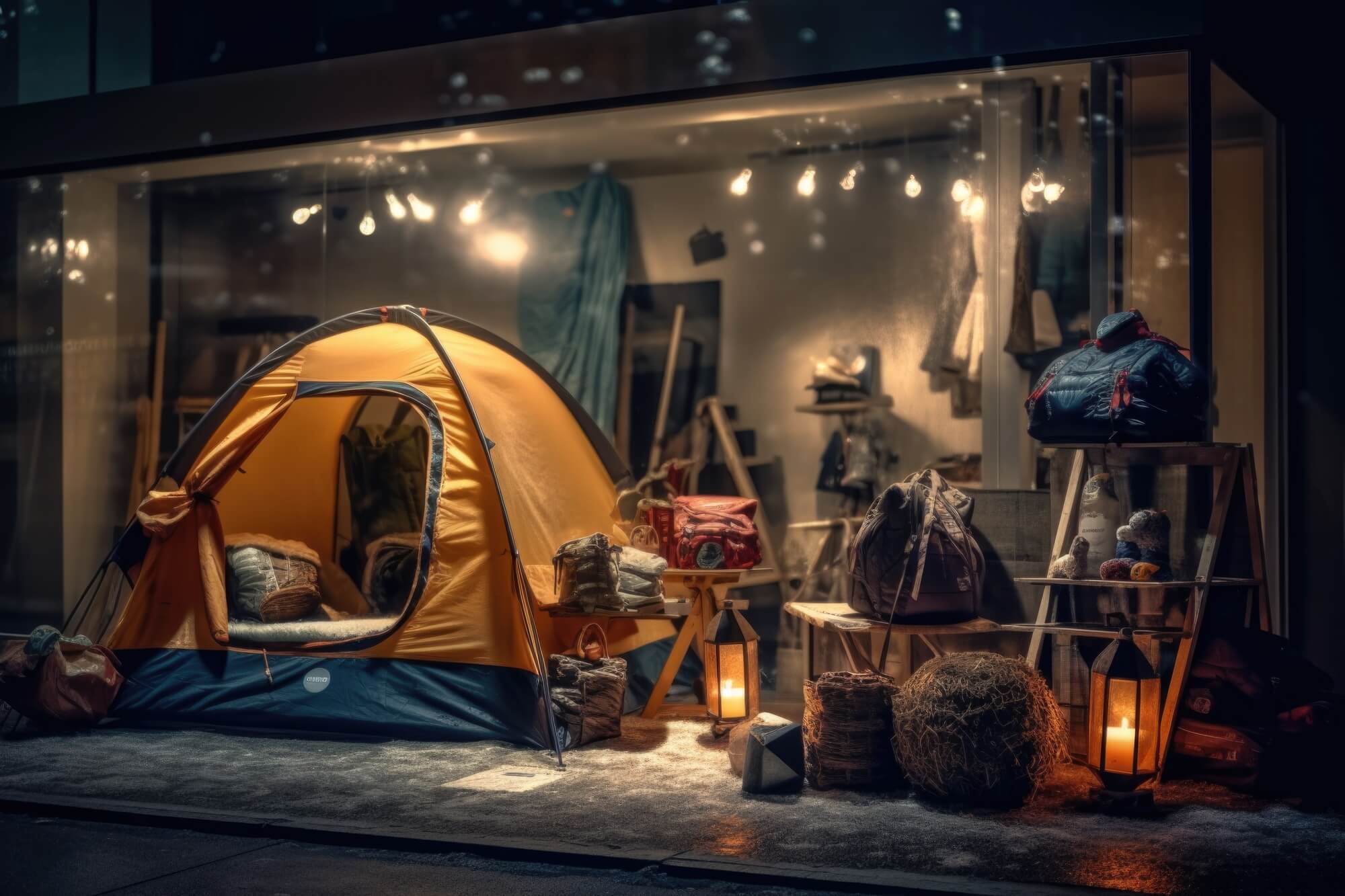Have you ever unpacked your camping gear for a long-awaited trip, only to discover a musty-smelling tent, a damp sleeping bag, or a rusty camp stove? Those moments can single-handedly deflate your outdoor enthusiasm faster than a rogue leak in your air mattress.
The truth is that these camping catastrophes are entirely preventable. With a few simple storage strategies, you can keep your gear in tip-top shape, ready to conquer whatever adventures await in the wild. Here’s your guide to transforming your gear storage from an afterthought to an adventure-saving superpower.
Why Proper Storage Matters
Shoving your dirty gear in the back of the garage or tossing it in a random attic corner might seem convenient. But that carefree approach can backfire in a big way. Imagine scrambling for replacements at the last minute, or worse, being stuck at a campsite with malfunctioning equipment.

Camping gear can be a significant financial commitment. Tents, sleeping bags, and quality outdoor equipment can last for years, but only if they’re correctly cared for. Proper storage extends the lifespan of your gear, saving you money in the long run and keeping your hard-earned cash free for more epic adventures. If you need storage, consider storage units Tyler TX Hwy 110, or a similar one in your location.
Now, here’s how to store your camping gear safely:
Prepping Your Gear for Storage
Before you tuck your gear away for safekeeping, a crucial step awaits: prepping it for storage. Think of it as giving your equipment a spa day – a chance to rest, rejuvenate, and avoid any nasty surprises down the line. The critical enemy here is moisture, which can lead to everything from mildew growth to rust. So, banish those problems and ensure your gear is sparkling clean and dry for its slumber.
Here’s how to get your gear prepped for a happy storage experience:
- Clean the gear thoroughly: First things first, grab your cleaning supplies and get ready to banish any dirt, grime, or food residue. The specific cleaning methods will vary depending on your gear, so always check the manufacturer’s instructions for the best approach. Generally, a mild soap solution and some gentle scrubbing should do the trick.
- Dry them out completely: Once everything is clean, drying is vital. Allow your gear to air out thoroughly before storing it away. This step means finding a well-ventilated spot, ideally out of direct sunlight, to let everything dry thoroughly. For tents, set it up indoors if possible, or at least unfold it completely. Hang sleeping bags and pads or lay them flat to maximize air circulation.
- Don’t miss the small ones: While tents and sleeping bags might be the obvious contenders, don’t neglect the smaller items. Clean and dry your footwear, ensuring no dampness lingers inside. Empty your backpack and wipe it down. For cooking gear, remove any leftover food particles and ensure everything is completely dry before storage.
By taking this time to clean and dry your gear correctly, you’re setting it up for a successful storage stint.
Choosing the Perfect Storage Spot
 Now that your precious camping equipment is sparkling clean and dry, it’s time to find its ideal storage haven. This “happy place” should be somewhere that protects your gear from the elements and ensures it stays in top condition until your next adventure. Here are some key factors to consider when selecting the perfect storage spot:
Now that your precious camping equipment is sparkling clean and dry, it’s time to find its ideal storage haven. This “happy place” should be somewhere that protects your gear from the elements and ensures it stays in top condition until your next adventure. Here are some key factors to consider when selecting the perfect storage spot:
The Trinity of Ideal Storage: Cool, Dry, and Well-Ventilated
Imagine the three golden rules of gear storage: cool, dry, and well-ventilated. Aim for a consistently cool location, ideally with moderate temperature fluctuations. Avoid excessively hot attics or damp basements. Good ventilation is crucial to prevent moisture build-up, so prioritize spaces with natural airflow or the option for proper air circulation.
Some Domestic Storage Options:
Explore some standard storage options within your home:
- Basements: Basements can be suitable storage solutions if they’re dry and well-ventilated. However, if your basement tends to be damp, consider using a dehumidifier to control dampness levels.
- Attics: Attics can offer excellent ventilation, but be mindful of extreme temperatures. Ensure proper insulation to avoid scorching summer heat or freezing winter chills.
- Garages: While garages may seem like a convenient option, proceed with caution. They can be prone to moisture fluctuations and temperature swings. If you must use a garage, choose a location away from sources of dampness and consider adding shelving to elevate your gear from the ground.
- Sheds: Similar considerations apply to sheds as garages. Prioritize good ventilation and be aware of potential humidity issues.
Remember, the ideal storage spot should offer a consistent, controlled environment that protects your gear from the harsh realities of fluctuating temperatures and moisture.
Selecting the Right Storage Containers
Choose the optimal storage containers. These containers will provide an additional layer of protection, further safeguarding your equipment from dust, dirt, and potential damage. Here’s a breakdown of some key container types and their ideal uses:
- Airtight containers: For moisture-sensitive gear like clothing and sleeping bags, airtight containers are ideal. These containers minimize exposure to humidity and dust, keeping your gear fresh and protected.
- Breathable bags: For tents and sleeping bags that require air circulation to prevent mildew growth, breathable bags are the way to go. These bags allow air to flow freely while still offering protection from dust and debris.
- Sturdy containers: For delicate items like stoves, lanterns, or heavier gear, sturdy containers provide vital protection. Look for options made from durable materials like plastic or canvas that can withstand bumps and potential stacking during storage.
Regardless of the container type you choose, clear and concise labeling is essential. This step will save you time and frustration when searching for specific gear items on your next adventure.
By following these guidelines and selecting the appropriate containers, you can transform your gear storage from an afterthought into a system that maximizes protection and organization.
Gear-Specific Storage Techniques
Different types of camping gear have unique storage requirements to ensure optimal performance and longevity. Here’s a breakdown of some standard gear and the best ways to store them:
- Tents: Store tents loosely in a breathable bag rather than compressing them in a stuff sack. This approach prevents unnecessary stress on the fabric and helps maintain its integrity over time. Additionally, it’s essential to store tent poles separately in a ventilated case to avoid warping.
- Sleeping bags: Hang sleeping bags loosely in a closet or store them flat on a shelf to maintain their shape and effectiveness. Occasionally fluff the bag to redistribute the insulation and prevent clumping, ensuring optimal warmth and comfort during its subsequent use.
- Sleeping pads: Whether you choose to store them inflated or rolled loosely, it’s crucial to avoid tight compression, as this can cause damage to the pad’s structure over time.
By following these tips and tailoring your storage approach to the specific needs of your gear, you can ensure your equipment remains in top condition.
Final Thoughts
By investing a little time following these simple steps, you’ll enjoy years of worry-free outdoor expeditions. With proper storage, your camping gear transforms from a jumbled mess into a trusty partner. So, dust off your backpack, embrace the call of the wild, and get ready to create memories that will last a lifetime.

